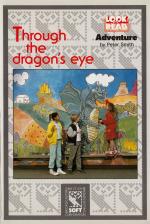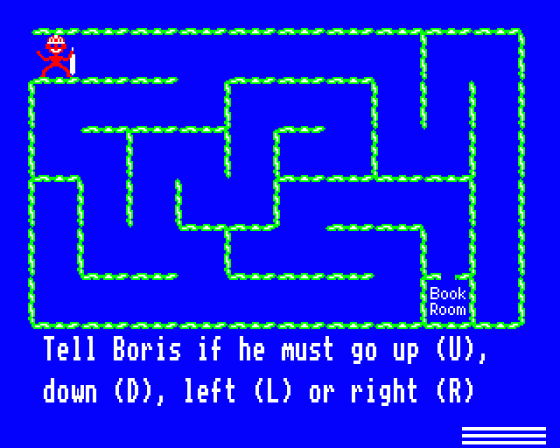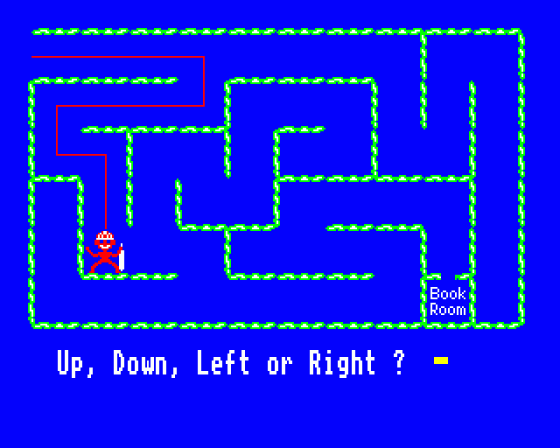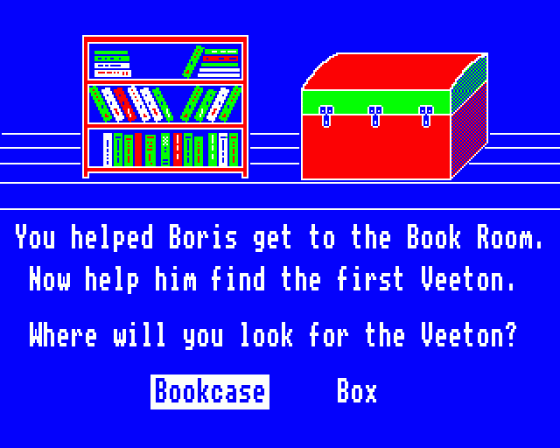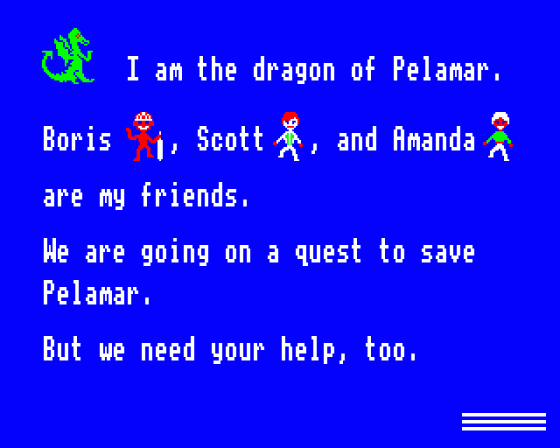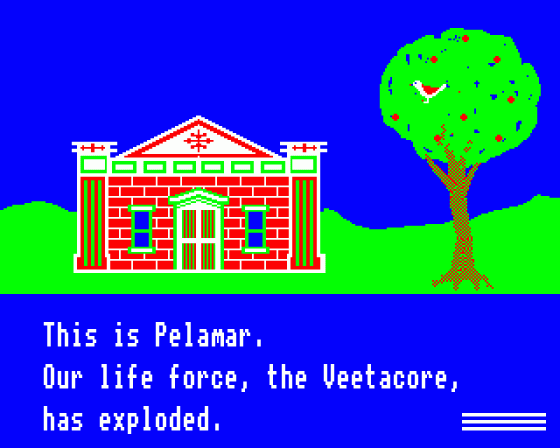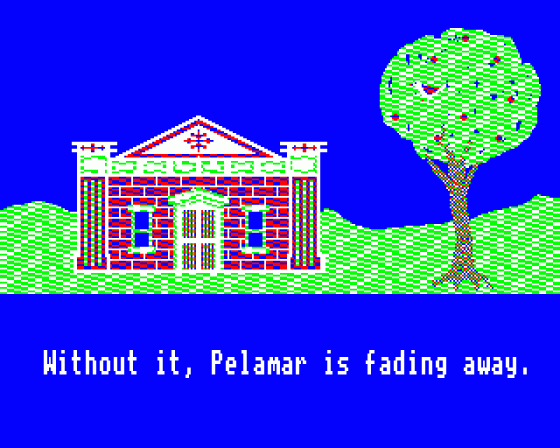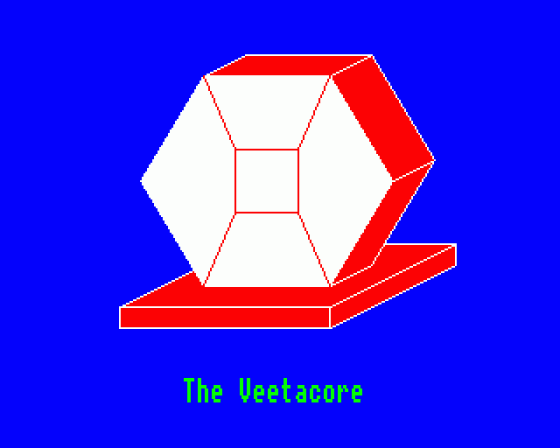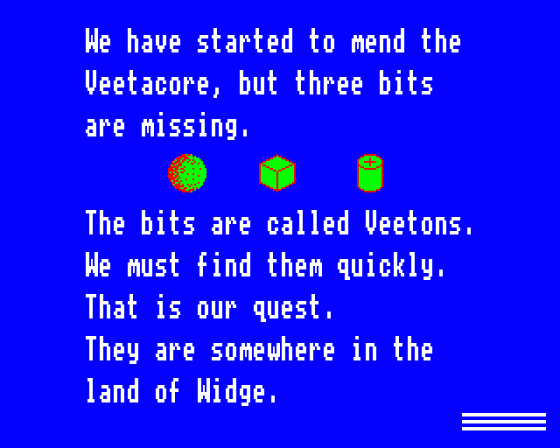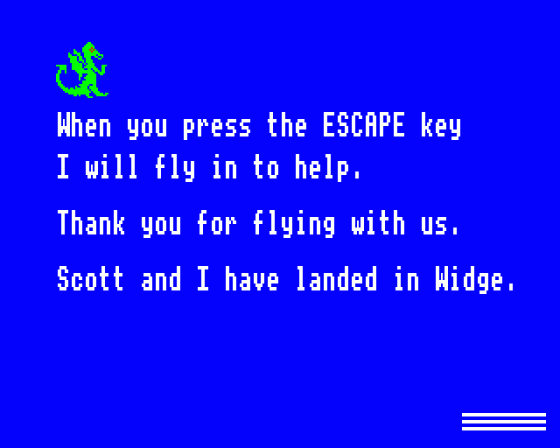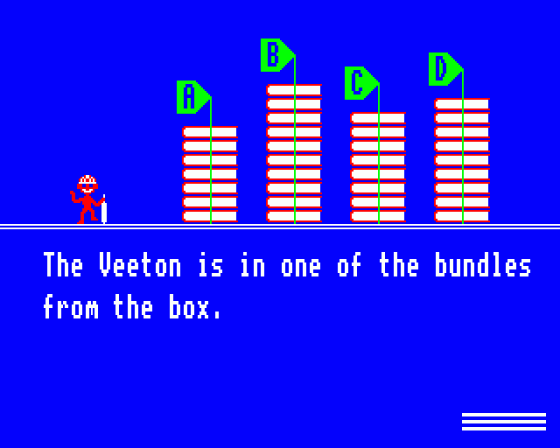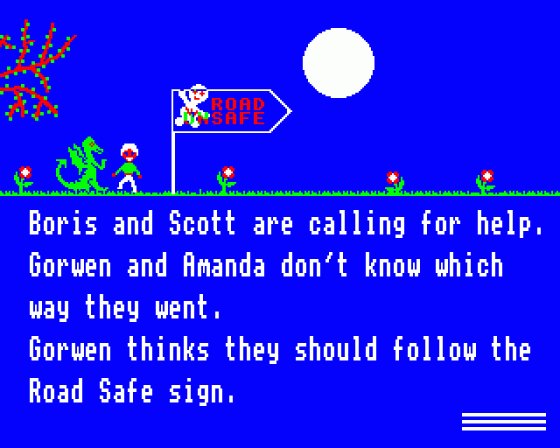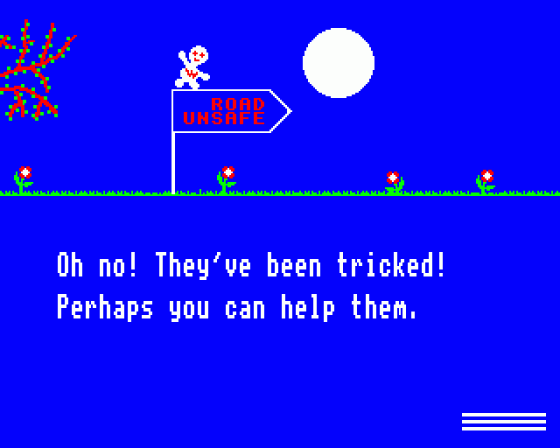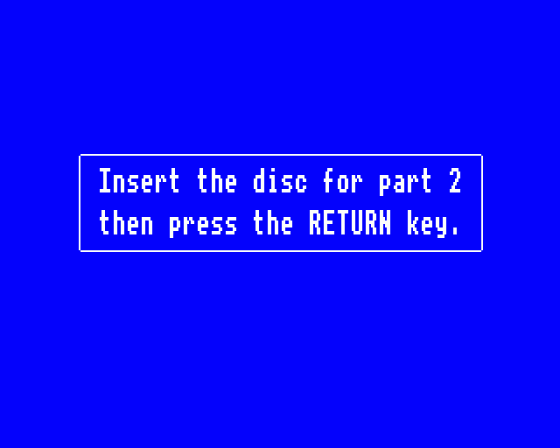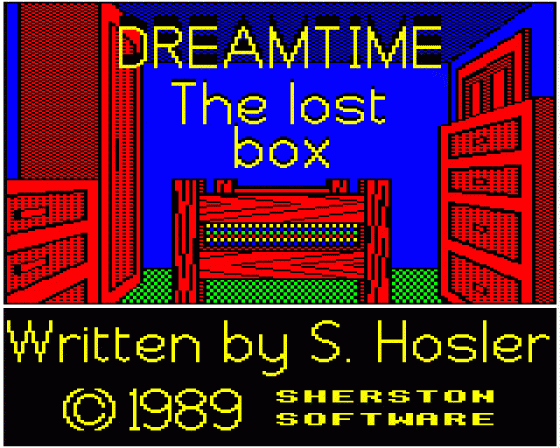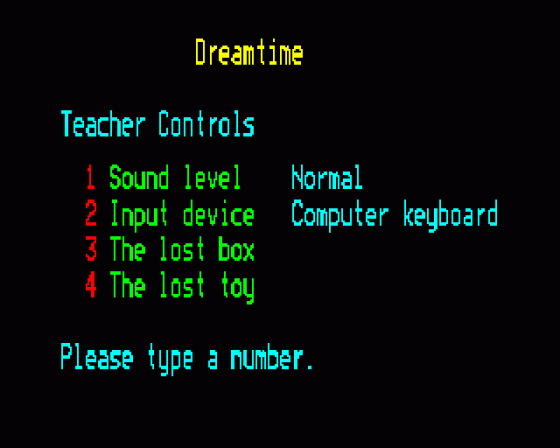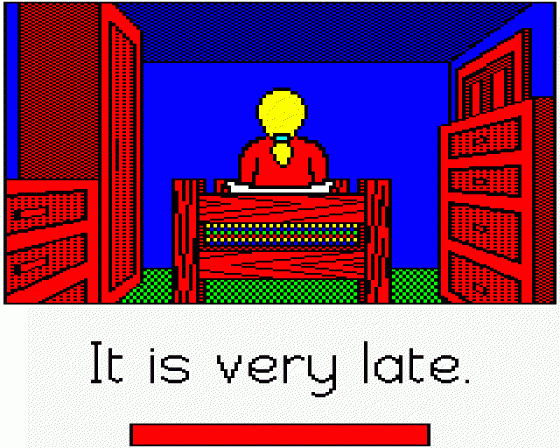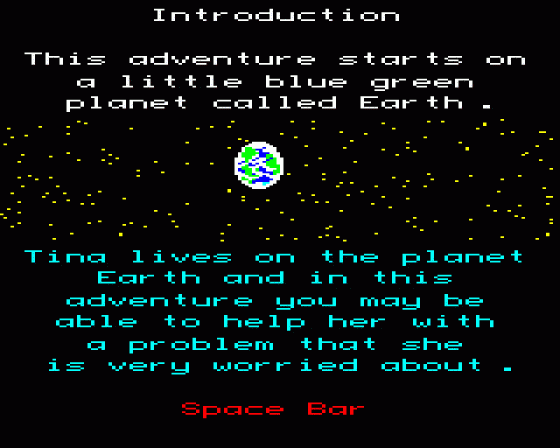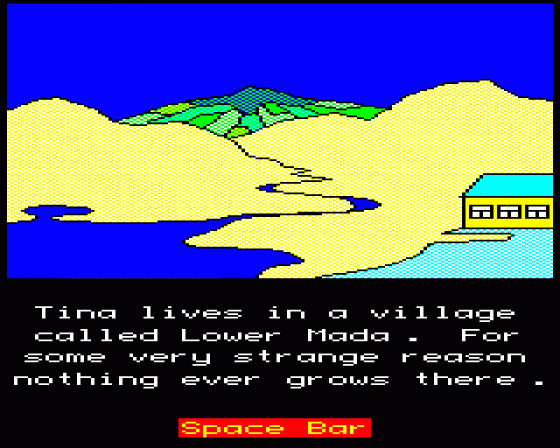

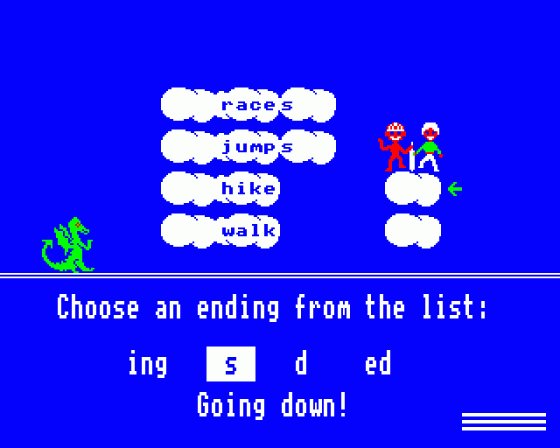
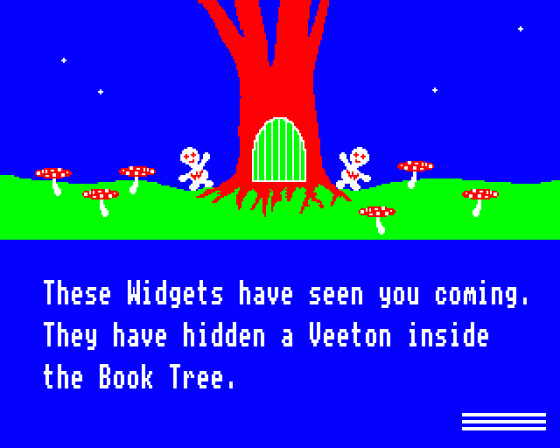
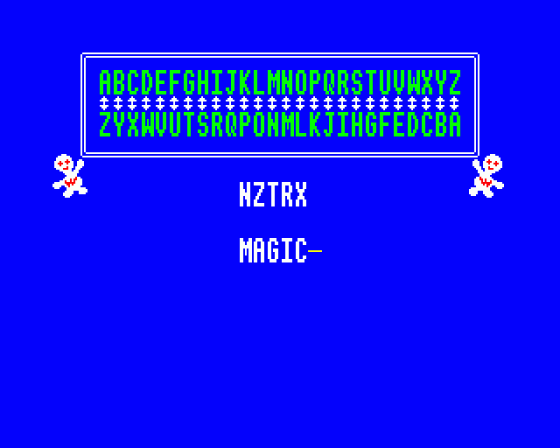
| Genre: | Unknown Genre Type |
| Series: | Number 2 in Look & Read (Bbc) |
| Publisher: | BBCSoft/BBC Publications |
| Cover Art Language: | English |
| Machine Compatibility: | BBC Model B, BBC Model B+, BBC Master 128 |
| Release: | Professionally released on 5.25" Disc |
| Available For: | BBC B/B+/Master 128 |
| Compatible Emulators: | BeebEm (PC (Windows)) PcBBC (PC (MS-DOS)) Model B Emulator (PC (Windows)) |
| Original Release Date: | 7th November 1989 |
| Original Release Price: | £9.95 |
| Market Valuation: | £18.65 (How Is This Calculated?) |
| Item Weight: | 320g |
| Box Type: | Custom |
| Author(s): | Peter Smith, Mary Hoffman & Christopher Russell |
Variant Items
There are 0 other items featuring this same game (that we know about!). Click any of them for their details.
Active Auctions
Closed Auctions
Buy It
Unfortunately no-one is currently selling this item.
Auction Price Watch
Worried you're being ripped off? Closing prices on eBay can help you decide what a reasonable price is for a particular item.

Beebug
1st December 1989
A set of programs which will provide some purposeful, stimulating and worthwhile new activities for children. Read Review
Full Instructions
Introduction
Through The Dragon's Eye is a game in which you are invited to join the quest to save the magical world of Pelamar. Its life-force, the Veetacore, has exploded and your help is needed to find some of the missing pieces.
Your guide is the mighty dragon Gorwen, and your companions are Scott, Jenny and Amanda. No-one in Pelamar can read, which is why Gorwen needs children to help. There are lots of clues and riddles to help you find the missing Veetons, so you'll have to do a bit of reading and a lot of thinking. On the way you will meet some dangers and obstacles to overcome, but remember: words are on your side!
You will have some trouble with the naughty Widgets, furry little creatures who live in Widge, where your quest begins. They may seem helpful, but be careful... If you find all three missing Veetons, you can be there when the Veetacore is put back together and all Pelamar comes alive again.
Note: Another program based on the 'Look And Read' series is Through The Dragon's Eye: Storyboard. This is a 'content free' software pack, providing a library of images taken from Through The Dragon's Eye, which acts as a stimulus for children's own writing. Both packs can be used independently of the broadcasts.
Organising The Classroom
While it is perfectly possible for the adventure games to be played by one person at a time, the best way to use them in school is as group work. A group of up to five children should be able to see the screen at the same time. Each group will need to appoint one child as reader and one as keyboard operator, but these roles can be switched around if the group are playing more than one game consecutively. Wherever there is a choice, all decisions should be made jointly after discussion and not just by the keyboard operator. In larger groups it may be useful to nominate a spokesperson, to co-ordinate decisions and have a casting vote.
When the user guide refers to 'the player', this can be taken as meaning the group as a whole. The games are devised to provide maximum opportunities for discussion, problem-solving, prediction and recall. We have found in trialling that often different members of a group are best at different games, the poorer reader being better at Maths, or running the maze or whatever. Note: It will be useful for groups to have pencils and paper.
Gorwen Sets The Scene
First, Gorwen the dragon introduces himself and asks if players have been on a quest with him before. New players press N for No and move straight to some further instructions before Landing In Widge. Players who have used the software before can press Y for Yes and move straight to the contents list or menu for all the games.
Gorwen tells new players that he comes from the land of Pelamar. The life-force of Pelamar, called the Veetacore, has exploded and, without it, the land is fading away. He invites children to join him and his companions on a quest to find the missing Veetons that are needed to repair the Veetacore. They will have to travel to the land of Widge.
Gorwen shows the symbol which means 'press the space bar' and gets children to try it out. He gives this instruction:
When you have to make a choice,
use the SPACE bar to choose
and the RETURN key to confirm
your choice.
You could teach children this rhyme to help them remember:
Use SPACE and RETURN
to choose and confirm.
Gorwen also tells them to press the ESCAPE key when they get stuck. This will provide a screen of further instructions on each game.
Landing In Widge
Landing in Widge draws on children's ability to recognise variable verb endings (the markers -ing, -ed, -d and -s) and add them appropriately to verb stems. There are three sets of words that come up randomly. Players have to be aware of the spelling changes to verbs that end in 'e' or that duplicate final consonants. If a wrong choice is made, the screen says 'Sorry, no' but the children may not realise what they have done wrong, in their eagerness to try another ending. It is worth getting them to look again at why the program did not accept their wrong choice. When all four verb endings are correctly joined up, Boris and Amanda make a safe landing in Widge.
The Book Tree
Waiting in Widge are two naughty Widgets, hiding behind the Book Tree, whose door is locked. Players have to find a password to unlock it.
There are three randomly generated password games here. In one children have to find three words connected with the story in a word search. In another, the password is written in a simple letter-substitution code and a key is provided. In a third, maths is required to help decide which Widget is thinking of the largest number. The initial letters of the Widgets' names will spell out another password if the instructions are followed.
Lost In The Maze
The player(s) guide Boris through the maze to the Book Room by giving simple instructions on the keyboard U for Up, D for Down, L for Left and R for Right. The directions refer to the player's orientation, not Boris' left or right. When one of these letters is pressed, the question 'How many steps?' comes up on screen and the player must type in a number. If the number of steps is too many, Boris bumps into a line and you have to go back to the start of the maze. You do not press RETURN in this game.
In The Book Room
You have to help Boris find the first Veeton. First the choice is between the bookcase or the box. If the bookcase is chosen, the player has to find a number which obeys three mathematical conditions. If the number is correctly worked out, the Veeton glows and pops out of the bookcase.
If the box is chosen, the player is shown three bundles of books and asked which could be shared out evenly among a certain (variable) number of people. If this division sum is answered correctly, the Veeton glows and pops out of the bundle. (See section six for some useful mathematical follow-up work.)
Tricks And Traps
This is one of the longer, more complicated games, relying partly on logic, partly on luck, and a lot on memory recall. Gorwen and Amanda are trying to find Scott and Boris. They are tricked into taking an unsafe road. The player has to choose from a list up to three things that might be useful to them. If the necessary things are not chosen, players will be sent back to this screen at a later stage in the game.
The game proceeds through a series of obstacles and choices. If the wrong choice is made - and the right choice cannot always be predicted by logic alone - the player is sent right back to the beginning of the game. Then it is important to remember which earlier choices worked so that the player can return to the last decision point as quickly as possible.
Later on in the game players have to work out another password, based on meaning. They will also be asked to make use of the objects they chose to take with them on the journey. If they successfully negotiate all the hazards of the game, they find the second Veeton - it falls on Boris' head, as in the drama. The final stage of the game involves recalling a password from the Book Tree game.
The Magic Waterfall
In this game you first have to choose whether to help Boris or Gorwen. Whichever choice is made, a cloze text in the form of a poem will appear. Children must use their outside knowledge, their ability to predict and their ear for rhyme to complete the poem correctly from a list of given words. Once they have done this, they are invited to make a 'silly' poem, using the same words. (They can only do this by using all the same skills as in the last game, and this time examining them more closely). Once the sensible and silly poeams have been completed, the player gets a map of Widge.
 |
Win Back The Map
No sooner has the map been gained than it is stolen by Widgets. Children have to choose to play a word game with one of two Widgets to win the map back. There are two word games (each with three random sets of words).
Compound Words
Players are asked to match two sets of words to form new compound words. Compounds which hyphenate are allowed but not pairs of words usually found together but printed separately. We have taken the Oxford English Dictionary as our authority on compounds and hyphenation. That is the basis for whether the program allows a compound or not.
Opposites
This is a similar kind of game, where words have to be paired with their opposites. Again, there is a given list, so this is a multiple-choice kind of game rather than an open-ended one.
Which Way Now?
This is a deceptively simple game, involving mathematical skills and reasoning and an awareness of compass points. The player has to work out the shortest route to the last Veeton. Although the right answer might be chosen by chance, the player is then asked questions which can't be answered unless the first choice was a calculation rather than a guess. Having decided the shortest route, the player than has to choose the safest one. When the right road is chosen, the player has to give directions, using eight compass points, for how to navigate it.
Scott In Danger
This is a memory plus knowledge game. Players have to get ten right answers before Scott falls out of the tree. He slips further with each wrong answer and will fall after five wrong answers. If ten right answers are given, Scott falls with the Veeton onto a Widget safety net. The questions all relate to earlier games and/or world knowledge.
 |
Mending The Veetacore
Now that the three last Veetons have been found, the Veetacore can be mended, but first players have to answer questions which test their knowledge of solid geometry (see Maths follow-up). There are questions about the number of faces (surfaces), edges and corners (vertices) each of the three Veetons have. When all these questions are correctly answered, the three Veetons disappear into the Veetacore and the repair is complete. Only the spell is needed to get the Veetacore working again.
Note: For the sake of the mathematical usefulness of this game, we have made the first Veeton a regular cube, even though in the drama it is a cuboid of flatter shape, more like a book.
The Spell
This is a word-sequencing game. Once the words are in the right order, the spell works, the Veetacore glows and colour and life are restored to Pelamar. It is possible to work out the order even if the drama series has not been seen but since it is difficult, we give the correct spell below:
Power of good give life to Pelamar.
Story Synopsis
Amanda, Scott and Jenny are painting a mural on their playground wall when it suddenly comes to life. The large green dragon in the fantasy landscape winks at them and invites them in. His name is Gorwen and he needs them to help save the land of Pelamar.
The life-force of Pelamar, the Veetacore, has exploded and the pieces have been dispersed. The three Keepers of the Veetacore think they have found all the parts and are trying to reconstruct the life-force. There is an old manual which would help them, but it turns out that no Pelamots can read!
This is where the children come in. Overcoming initial hostility from the Keepers, they read the first page of the manual and find that three of the twenty-five Veetons that make up the Veetacore are still missing. The Pelamots say that the missing Veetons must be in the neighbouring land of Widge. But no-one wants to go there because the furry little Widgets who live there are always playing tricks and setting traps for travellers.
After drawing lots, Gorwen takes Amanda and Scott with him to Wiedge. The search party is completed by Boris, one of the Keepers, and Rodey, a giant white mouse, who can speak Widgeon, the language of Widge. Jenny stays behind at the Veetacore House with Doris and Morris, the other Keepers. She makes a start on assembling the Veetons, but finds the manual very hard to read. Doris is very suspicious and unhelpful.
The search is beset by obstacles, some devised by Widgets. But there are also clues to help them and the travellers discover that words are on their side. Boris even begins to learn to read!
By the time they have recovered two Veetons, Jenny is in serious trouble at the Veetacore House. Charn, the evil one, has arrived and plans to take over Pelamar and pervert the Veetacore to a force of evil. He turns Doris into a puddle, but Jenny ingeniously manages to get a message to the others, saying HELP! CHARN! Gorwen sets off immediately with the two Veetons, leaving Scott, Amanda, Boris and Rodey to retrieve the last one.
After a great battle, Charn is defeated and Gorwen restores Doris and all the others who have been turned into puddles. But this leaves him very weak - time is running out for the quest. The search party see the last Veeton in the branch of a tree overhanging a ravine and Scott bravely climbs to get it.
After a last minute rescue by Widgets, the search party sets off for Pelamar with the final Veeton. They arrive in the nick of time, only to find that Morris' pet caterpillar Frug has eaten the last page of instructions for reassembling the Veetacore. They don't know which way up the last Veeton should go!
Frug suddenly emerges as a huge butterfly with the missing words on his wings. The Veetacore is completed, Gorwen's strength restored and everyone rejoices. In mid-celebration, the children hear the sound of the dinner whistle. Incredulous, they step back out through the mural into the playground. As they turn they see the dragon's eye wink.
Project Work
 |
The story of Through The Dragon's Eye can act as a stimulus for many kinds of project work. We give suggestions for one here and others can be found in the Teachers Notes to the series (See Related Materials).
Dragons And Other Fabulous Beasts You can start a literature-based project either concentrating on dragons alone, or including other kinds of mythical beasts - unicorns, gryphones, sphinxes, centaurs, etc. There is a list of 'dragon books' in the booklist and you will probably find many more than you can add, since the dragon is a popular figure in myth, legend and children's stories.
Qualities Of Dragons Get the class to make a Gorwen chart, or a dragon-shaped book, listing all his qualities and characteristics. Start with physical characteristics - he has scales and wings, is green, etc. As time goes by, you can add his moral characteristics - courtest, bravery, wisdom, tact. Contrast this with the qualities of dragons in other stories, in which they are usually 'baddies' e.g. St George And The Dragon, The Lambton Worm, the Volsunga Saga, The Hobbit, A Wizard Of Earthsea and so on. Kenneth Grahame's The Reluctant Dragon is one of the first stories to see the dragon as an innocent and maligned character. There is a lot of word arising out of this that could relate to the Chinese dragon and its place in the Chinese New Year celebrations.
Other Fabulous Beasts In the booklist you will also find titles that relate to other mythical beasts. You should be careful in doing this topic with juniors, many of whom do believe in the existence of dragons and other fabulous creatures. After all, they have been taught that dinosaurs really did exist a long time ago and these appear equally fantastic and impossible animals.
As well as collecting examples of other mythical beasts, get children to invent their own. One way of doing this is to make a 'Heads, bodies and tails' book, split into three horizontally, so that children can mix and match their own creatures. Each newly-invented creature must be given an appropriate name and its characteristics explained (not just the physical ones).
Children will know examples from popular culture too - Jabba the Hutt, Banthas and Ton-tons from Star Wars, Battle Cat and Swift Wind from the He-Man and She-Ra television series. From here it is a short step to monsters. Is there a difference and if so what is it?
Other Possible Projects include: 1. The life cycle of the butterfly 2. Pollution/conservation 3. The history of reading and writing
Maths Follow-Up
Solid Shapes
The Veetacore is made up of twenty-five solid shapes all of which have precise mathematical names. Begin with recapping the terms from plane geometry - circle, square, triangle, rectangle, hexagon. Do children know how to form the adjectives 'circular', 'triangular' etc? When children are quite secure on these, move to solid shapes. Make a 'shape table', perhaps divided into section exhibiting the different solids. Use ordinary objects and materials to demonstrated the shapes and get children to bring things in from home, e.g. a tin of beans is a cylinder. (The basic design of the Veetacore was inspired by a popular kind of storage jar belonging to Christopher and Christine Russell!)
Solid shapes can also be made using, plasticene, clay, 'Poleidoblocks', multi-ink bricks or junk modelling materials. Help children to learn the names for the attributes which identify the shapes. The term 'face' can be highlighted by painting each surface of a solid a different colour, or giving it a number, or drawing a face on it. The edges of each shape can be counted and recorded as either straight or curved and attention should be drawn to the points or 'vertices' where edges join.
 |
So the terms 'face', 'edge' and 'vertex' (pl. 'vertices') should be quite clear. Get children to make a chart describing each solid shape in terms of its number of faces, number and types of edges and number of vertices. The sphere will prove particularly interesting.
Solid shape terms can be learned to link up with the plane terms:
circle
square
rectangle
triangle
hexagon
sphere
cube
cuboid
triangular prism
hexagonal prism
Other terms that will be needed for describing Veetons are: parallelogram and trapezium. The three Veetons found by the search-party are a cuboid, a sphere and a cylinder. The actual solid shapes used in the construction of the Veetacore are as follows:
4 triangular prisms;
3 cylinders (one of which is short and flat like a disc);
6 cuboids;
1 cuboid with a cylindrical hole through it;
4 trapedzoidal prisms;
4 pentagonal prisms;
1 sphere and 2 prismatic shapes with 4 faces, 4 curved edges and 4 straight edges and 8 vertices.
Note: in the program, we have substituted a regular cube for one of the cuboids (see notes on Mending The Veetacore).
You can introduce the idea of regular solids, where all the faces are identical, and indeed you can make lovely models of these and, if you are in London, see very intricate models or regular solids in the Science Museum. Teachers may like to use the following books:
Wenninger, M.J. Polyhedron models Cambridge University Press 1971
Cundy, H.M. and Rollett, A.P. Mathematical Models Tarquin 1981
The subject of prisms can be explored, cutting through e.g. plasticene models, to show the regular cross-sections of triangular prisms as opposed to the varying sections of a sphere or cone.
Loading
SHIFT-BREAK
Game Credits
Software designed by Christopher Russell
Programmed by Peter Smith
Author/Consultant: Mary Hoffman
Educational Advisor: David Watkins
First published 1989 by BBC Soft
Screen Designers
The following utilities are also available to allow you to edit the supplied screens of this game:
Cheats
Download
A digital version of this item can be downloaded right here at Everygamegoing (All our downloads are in .zip format).
| Download | What It Contains |
|---|---|
| A digital version of Through The Dragon's Eye suitable for BeebEm (PC (Windows)), PcBBC (PC (MS-DOS)), Model B Emulator (PC (Windows)) |
Games Like Through The Dragon's Eye
Report A Problem
We thank you from the bottom of our hearts if you report something wrong on our site. It's the only way we can fix any problems!
You are not currently logged in so your report will be anonymous.
Add Note
Release Country
Change the country to update it. Click outside of this pop-up to cancel.
Scan Of Selected Article
If you auction an item, it will no longer show in the regular shop section of the site.

